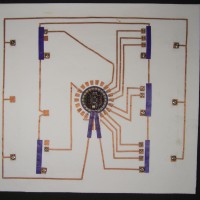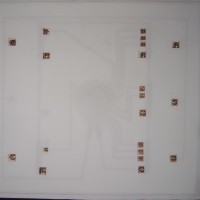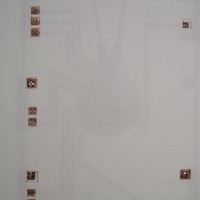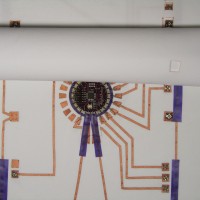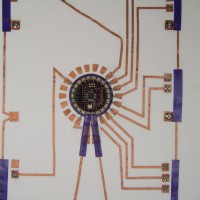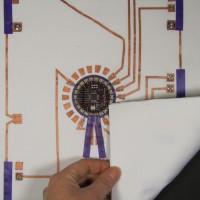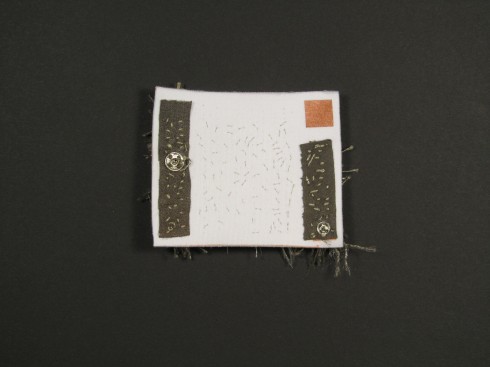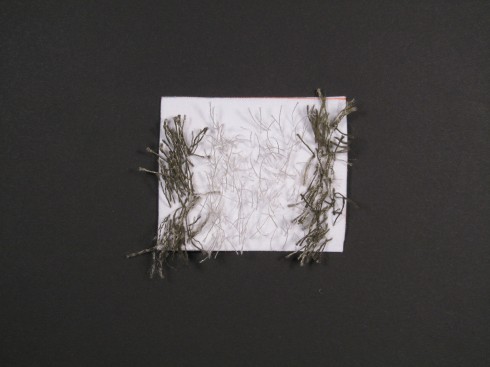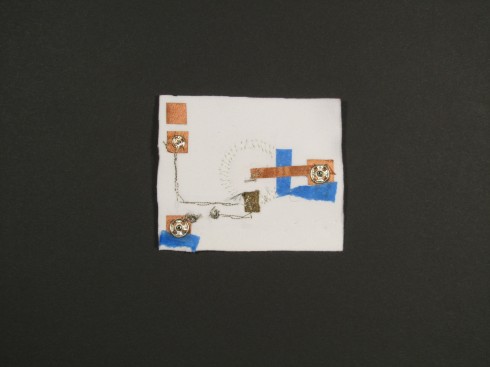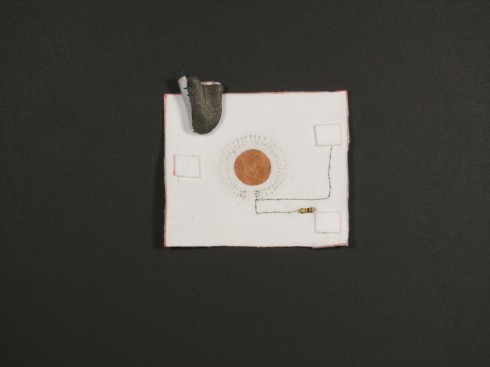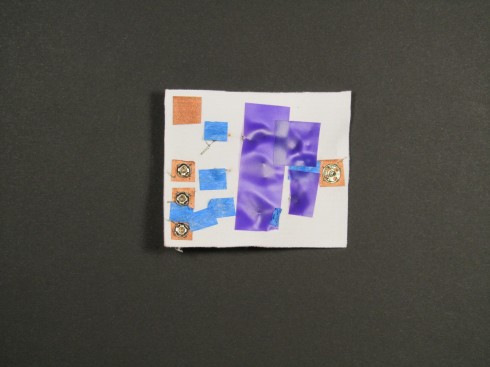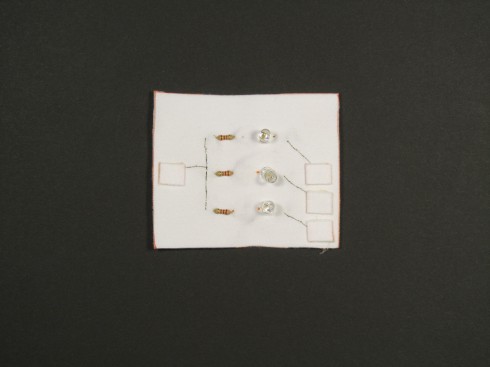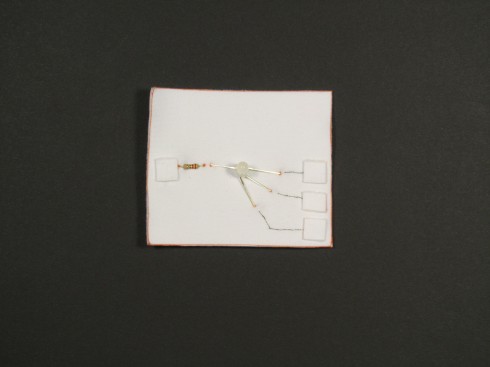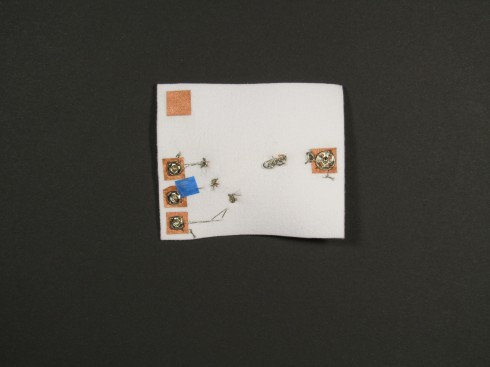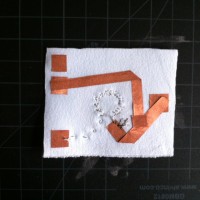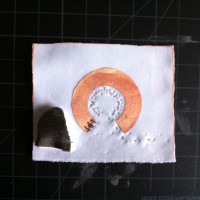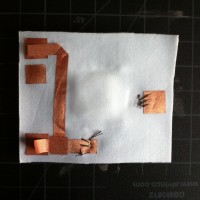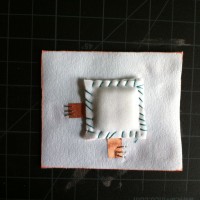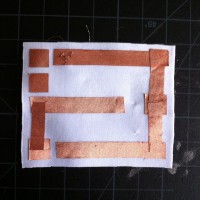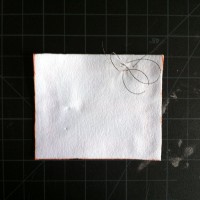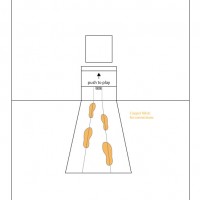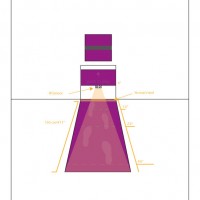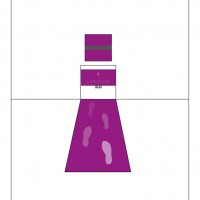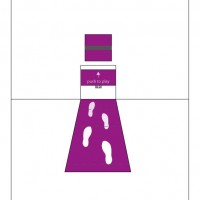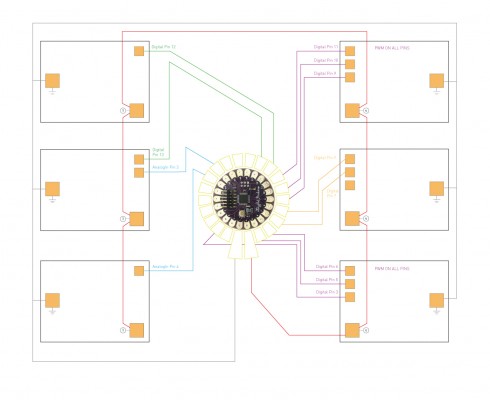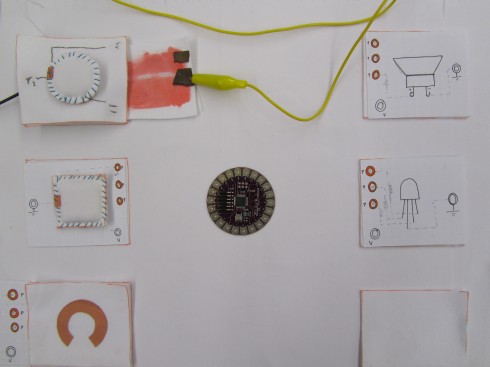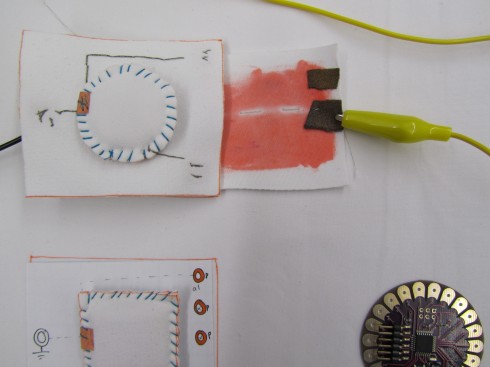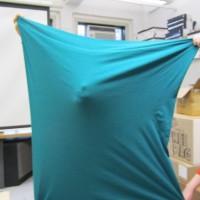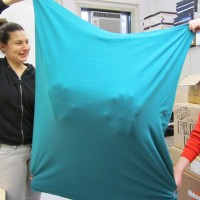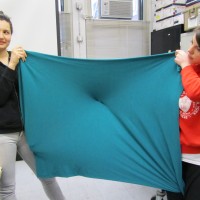Push Me Pull Me :: Construction + Code = User Testing
After a few snags in materials and construction, Paola offered us a fantastic solution. She suggested placing fabric around the boxed structure and focus on using the materials that we know work (i.e. the elastic), instead of forcing the materials we considered more aesthetically in line with our concept. As mentioned in a previous post, the elastic works much better in getting a dynamic range from the painted on liquid graphite; the other materials, such as spandex and jersey, ended up breaking the connection too much after a few uses.
Below are the videos documenting our first working prototype for the final piece and a bit of user testing:
First ProtoBoard Components! (INPUT)
- Potentiometer (front)
- The stroke sensor effectively acts as a switch.
- Still in the works – just a tuft of conductive fabric right now.
Live and Learn
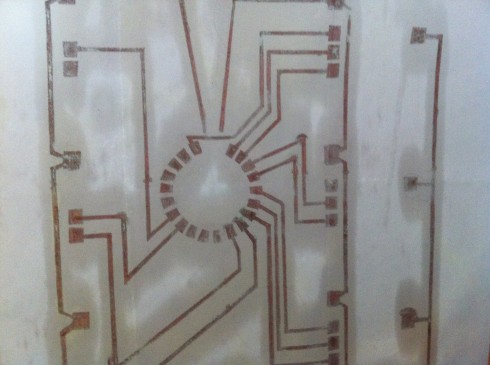
My first attempt at salt and vinegar etching a PCB turned out to be a bust. I left the fabric in the solution for almost 24 hours instead of the recommended 12; this disintegrated the traces and lost all the connectivity. I am in the middle of a second attempt at the moment.

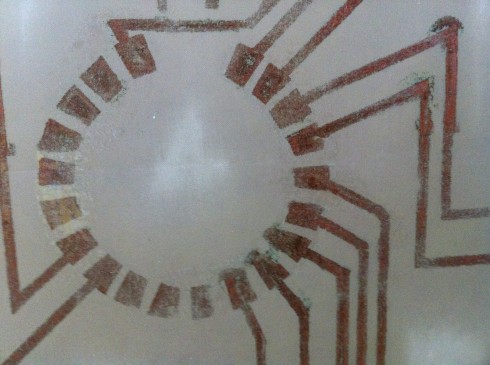
Two lessons to take:
PhysComp Final Project Concept 2
Calm Computing+IR Sensor
This final project assignment has three parameters: it must be calm computing; it must solve a problem; and it must use a IR sensor. Brainstorming this and avoiding a completely kitsch or overdone concept is much harder than you would think; so, I propose a project that would alleviate the omnipresent ordeal of erasing the spatial divide between user and interactive object. That is, constructing an object that facilitates interaction between the user/audience and an installation piece. Installations are often the preferred method of execution for many projects, yet we all fall into the trap of assuming our project will call people to interact with it. In reality, we have been conditioned with a museum mentality not to touch and we must break this behavior through the affordances of our design.
By combining the IR sensor to gauge the distance of a potential user, thermochromic ink and fabric traces (copper, specifically), I will construct a “red carpet” of sorts to invite the user to interact with a piece when they pass. As the user gets closer, Arduino triggers voltage from a certain pin to a footprint that leads up to the piece. Once the user is 6″ away, a sign is revealed to them that says “push me”. Not only will this aid in encouraging interaction with the specific piece, but is a form of interaction itself that can be used in a variety of situations.
Below are the paper prototypes and distance logistics (based on the ideal range of the sensor (4cm – 150cm):
Proof of Concept:
Push Me, Pull Me: Soft Circuits Final Project Concept
Concept
For our final project in Soft Circuits, Kate Watkins and I will create a large scale interactive, fabric-based soft circuit. One of the key motivations for us in deciding on this project was challenging pre- and mis-conceptions of soft circuits, especially in terms of their possible functioning and durability.
Feedback and New Questions
We got some fantastic feedback and new focus after our first class presentation. The main questions and themes that arose were:
-
What are the assumptions we are dealing with? What does it mean to be durable? What are the terms and concepts we need to examine and define for ourselves? Moving forward, one idea mentioned is to associate each panel with a different assumption, which will allow users to push and pull it, discovering all the potential in between.
-
How can you exploit the cracks, literally and metaphorically – i.e. how can we use what we know doesn’t work to stretch the boundaries of possible interaction. For example, silk screened paint on fabric is not the most durable way to create a circuit because it will crack when overused, but this could be used as a switch: when the cracks come back together, they will still complete the circuit.
-
What types of materials will we use? And more importantly, how will they be executed within the structure? Will the materials be integrated or attached; i.e. will there be a panel of velostat that acts as the main material or will there piece pieces of it sewn onto a larger piece of spandex (or any other material). I think the former could be much more interesting for experimentation, but also much more expensive. TBD.
-
How will we get people to interact with our project? What are the interactions we want to see happen? Or at least how will we constrain the type of interaction to create a meaningful interaction for our audience? Cecilia rightly reminded us of how easy it is to assume people will telepathically connect with the concept and engage in the associated action (which is never the case). In doing so, she also insinuated the trap of a one off interaction, which is so easy to fall into and a terrible mire, or for loop better yet, to climb out of.
Next Steps
Moving forward, here are the requirements for our second round of prototypes next week:
-
Define interactions and interaction with materials
-
List of materials
-
Articulate how materials will integrated or attached
Documentation
Our presentation is living here at the moment.


